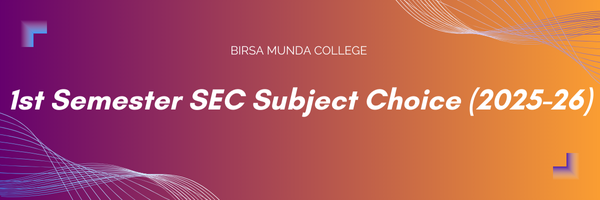Best Practices
Best Practices
Best Practice - I
Heritage Chronicles: Preserving Indigenous Cultures of Nakshalbari
Objectives of the Practice
1. Preservation of Cultural Heritage: Systematically document and archive indigenous languages and traditions to prevent their erosion.
2. Promotion of Cultural Awareness: Foster appreciation for the cultural diversity of local tribal communities.
3. Educational Enrichment: Integrate cultural heritage into the curriculum to enhance learning.
4. Empowerment through Language Preservation: Translate cultural materials into English for broader accessibility.
5. Future Publication and Dissemination: Publish and share documented heritage to reach wider audiences.
The Context
The Practice
1. Collection of Oral Traditions: The college collects oral traditions such as folk tales, songs, riddles, lullabies, poems, and prayer songs from local indigenous communities. Students, faculty, and local staff are actively involved in this collection process.
2. Student Involvement: Students are engaged in the documentation process, fostering respect and understanding of their cultural roots and ensuring the preservation of these traditions.
3. Translation for Accessibility: Cultural materials are translated into English to preserve their linguistic and cultural nuances while making them accessible to a global audience. This step involves careful collaboration to avoid loss of meaning and significance.
4. Publication of Materials: The college plans to publish these translated works to preserve and widely share the cultural heritage, contributing to academic studies on indigenous cultures.
5. Integration into Curriculum: Cultural awareness is promoted through seminars and talks, indirectly incorporating indigenous heritage into the academic environment.
Evidence of Success
Problems Encountered and Resources Required
• Explaining the Importance: Educating students about the value of their cultural materials and traditions.
• Student Connection: Addressing the limited direct contact students have with their traditional cultures due to modern influences.
• Translation Challenges: Ensuring culturally sensitive translation to avoid diluting the original meanings.
• Financial Constraints: Securing funds for extensive documentation, translation, and publication.
• Support and Sponsorship: Seeking support from potential sponsors and financial assistance to sustain the project.
Best Practice - II
Empower(H)er: Skill Development for Women Entrepreneurs
Objectives of the Practice
1. Skill Development: Provide vocational training to enhance employability and productivity among women.
2. Fostering Entrepreneurship: Support women in starting and running their own businesses.
3. Addressing Employment Challenges: Tackle unemployment and underemployment through skill development.
4. Integration with National Programs: Partner with initiatives like Pradhan Mantri Kaushal Vikas Yojana to upskill women and promote economic self-sufficiency.
5. Contributing to Socio-Economic Progress: Support broader socio-economic development through enhanced workforce skills.
The Context
The Practice
1. Skill Development Classes: The college has allocated a large room for skill development classes and workstations. These classes are open to college students and the broader community, with a focus on garment making.
2. Program Structure: The training includes theory sessions on garment types, fabrics, and tools, as well as practical classes on stitching techniques. Participants must pass an examination covering both theory and practical assessments.
3. Practical Application: The training equips participants with skills to launch small businesses, such as curtain-making ventures, contributing to their economic independence.
Evidence of Success
Problems Encountered and Resources Required
1. Scheduling Conflicts: Managing practical classes alongside regular college classes has been challenging for students.
2. High Registration Volume: The high number of registrations has exceeded the available space and resources.
3. Power Disruptions: Frequent power cuts have disrupted sessions.
4. Trainer Limitations: A single trainer for over 150 students has created a bottleneck in delivering individual attention.
Future Needs
• Additional Space and Infrastructure: To accommodate more participants and improve training conditions.
• More Trainers: To provide effective and individualized training.
• Infrastructure Improvement: To address issues such as frequent power cuts and enhance the overall training experience.



